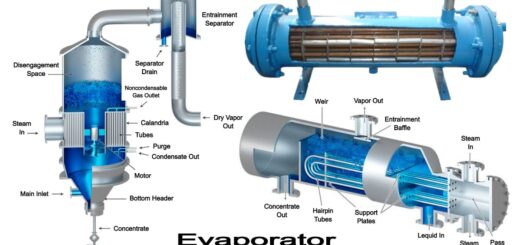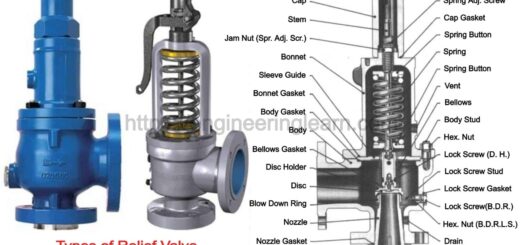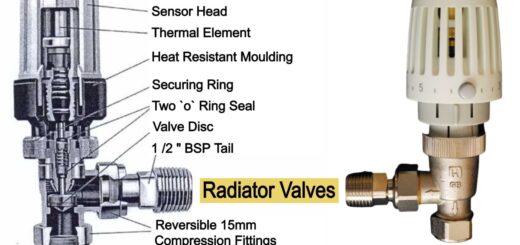4 Types of Sprinkler System and How They Work? [Complete Details]
![4 Types of Sprinkler System and How They Work [Complete Details]](https://engineeringlearn.com/wp-content/uploads/2021/12/Sprinkler-System-1024x539.jpg)
What is Sprinkler System?
Types of Sprinkler System and How They Work [Complete Guide] :- A sprinkler system is referred to as that system which is found consisting of pipes that move along with the ceiling which is found containing water under pressure accompanied with an additional source of water for a consistent flow. There are various attachments to the pipes for which there are automatic sprinklers which have been placed at the particular locations. Whenever there is a fire in the system, there is a seal present inside the sprinkler head which is found to rupture at a pre-established temperature accompanied with a steady stream of water flow.
There are various types of fire installations like wet system, dry system, deluge and pre-action systems. All these types of systems are dependent on the magnitude of temperature and the activation method for the fire system too.
It is commonly known that the sprinkler systems are usually intended in order to either control or to suppress the intensity of the fire. The fire is not extinguished until the burning materials are found to be exhausted completely either on their own or manually extinguished by the efforts of the fire fighters.
Types of Sprinkler System
There are various types of sprinkler systems which can be used depending upon the requirement as well as availability. Scroll down to know more about these sprinkler systems:
1. Wet Pipe Sprinkler Systems: ( Types of Sprinkler System )
Wet pipe sprinkler systems are referred to as one of the most common sprinkler pipe system. In this type of piping system the sprinkler piping is referred to as a constantly filled up pipe with water. Whenever the temperature at the ceiling is found to be increasing, the glass bulb or the fusible link in a sprinkler breaks automatically. The system is commonly found to be filled completely with water that needs to be free to flow to exit the sprinkler head.
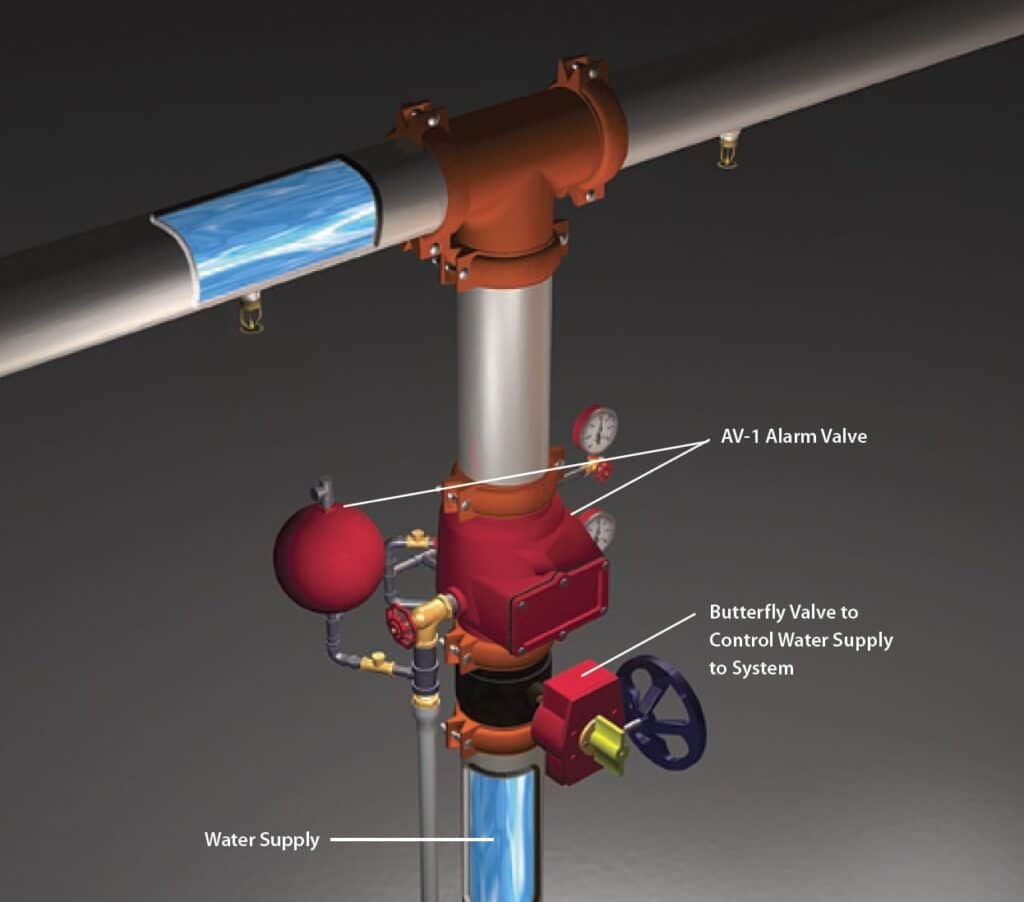
The temperature which is usually found seems to be around that specific sprinkler head which needs to be high enough in order to break the glass bulb or the fusible link that is found responsible for holding the water back. As soon as this happens, water is found to flow immediately from that head specifically.
Wet pipe sprinkler systems are found to be one amongst the most reliable as well as cost effective sprinkler systems. This is why these types of sprinkler systems should be considered as the first type while selecting any sprinkler system. There are times wherein any wet pipe sprinkler system if found not to be as appropriate as per requirement.
A wet pipe sprinkler system is referred to as that system which usually employs automatic sprinkler heads that seem to be attached to a piping system that usually contain water and thus is connected to a water supply so that the water discharges can take place immediately from sprinklers which have been opened by the impact of heat from fire.
2. Dry Pipe Sprinkler Systems: ( Types of Sprinkler System )
Dry pipe systems are referred to as one of the very similar pipe systems with reference to wet pipe systems accompanied with one major difference. The difference is that the pipe is not found to be constantly filled with water. The water is found being held behind a dry pipe valve which is usually at a specific distance away from where the sprinklers are easily found to be located. A wet pipe system can be considered, wherein the temperature at the ceiling is found being quite hot so that the glass bulb or the fusible link of the sprinkler brakes easily.
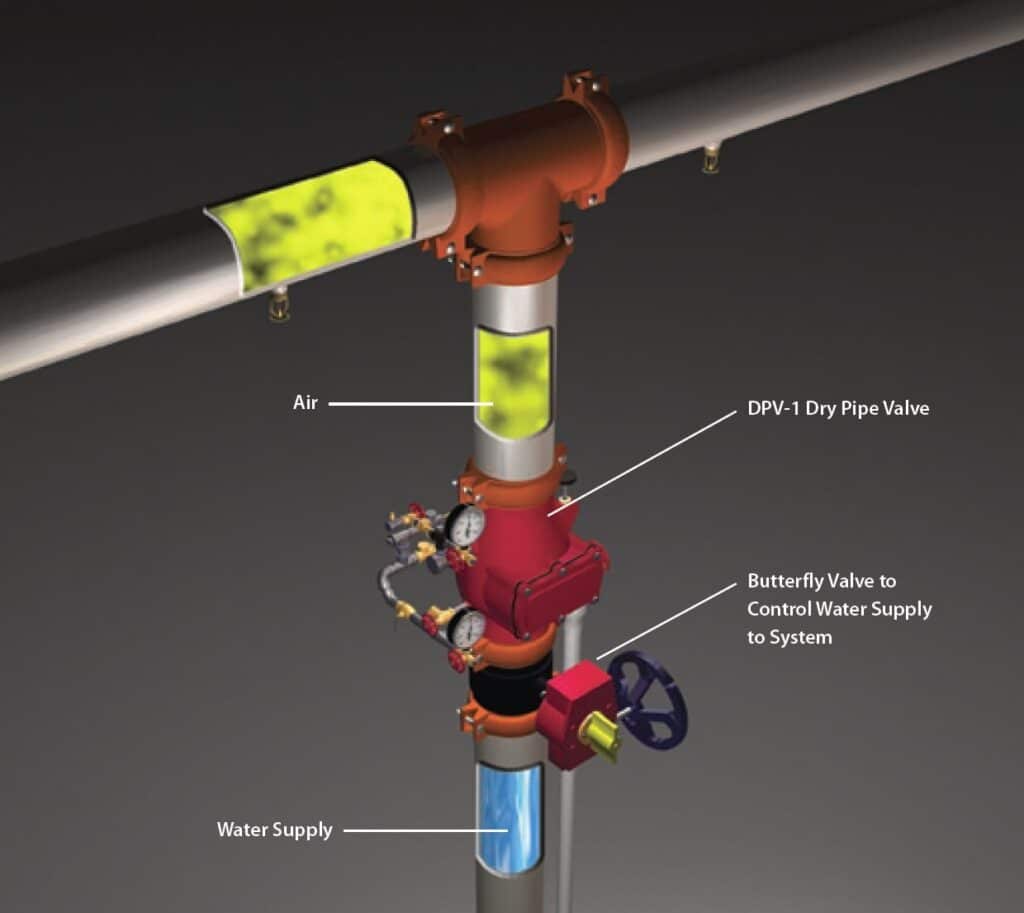
Most commonly in such cases, water is found not to be available immediately due to the empty pipe. Instead, it is found that the air is released from the sprinkler head which seems to be open. This is responsible for creating a drop in the pressure which causes the dry pipe valve to open and thus allows the water to fill the system completely. After this water is observed to flow within the open sprinkler head as you might observe a delay within the sprinkler operation as well as water flow.
The size of dry pipe systems is found to be limited. The size limitation is found being intended in order to minimize the amount of time which the water takes due to which the delivery seems to be delayed.
A dry pipe system seems to be a great option for all the unconditioned spaces where there seems to be a high temperature difference that does not seem to be enough in order to prevent water from the system of freezing. At the same time it seems to be really important to note that there should be least portion of the building where the water seems to be entering or exiting the dry pipe valve which can be located to have temperatures hot that are not at all enough to prevent freezing.
3. Pre-Action Sprinkler Systems: ( Types of Sprinkler System )
Pre-action systems refers to as that type of sprinkler system which seems to be the most complicated system as compared to any other system. There are found to be three different types of pre-action systems which that seem to be known as a non-interlock system commonly, a single interlock system, and a double interlock system. The major difference which is very well known is within the pre-action systems and wet and dry pipe systems which tells the specific event that must happen before the water is released into the system. One can observe similar to a dry pipe system as the differences lies in the event triggers that is responsible for releasing the water:
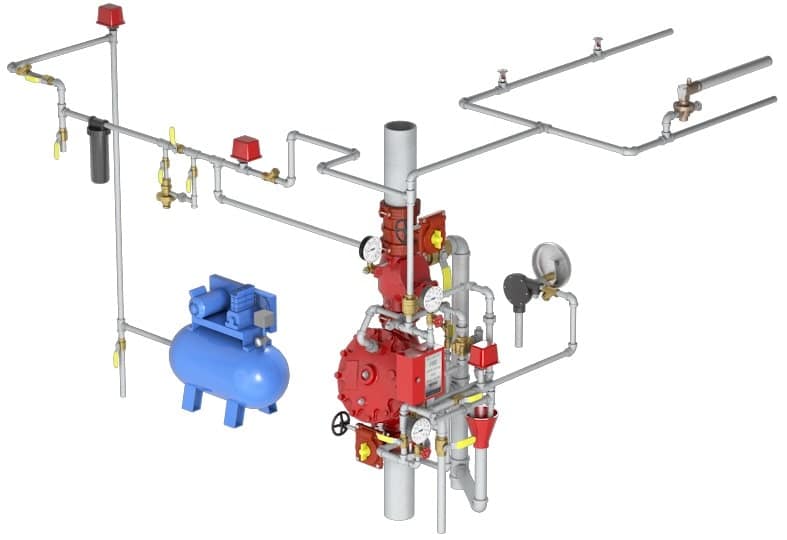
a) Considering a non-interlock system: operation of detection devices OR automatic sprinklers
b) Considering a single interlock system: operation of detection devices only
c) Considering a double interlock system: operation of detection devices along with the automatic sprinklers
In order to explain in a better way how these types of systems is found to work, one needs to walk through an example which is found using a room that needs to be protected along with the sprinklers that are found to be fed from a pre-action system. In addition to these sprinklers, the is found being responsible which has complete automatic heat detection. The detection system is responsible for having a lower temperature which rates more than the sprinklers. This is what ensures that the detection system is found to be activate before a sprinkler head is found to start operating. The heat detectors are specifically found rating around 135OF which makes it responsible for serving as our detection system, and the sprinklers also have a temperature rating of 165OF.
4. Deluge Sprinkler Systems: ( Types of Sprinkler System )
Deluge systems are referred to as those systems which are quite similar to the pre-action systems in which they are found using another type of detection for any type of operation. One major difference which has been known till now is that the deluge systems are found using open sprinklers or nozzles.
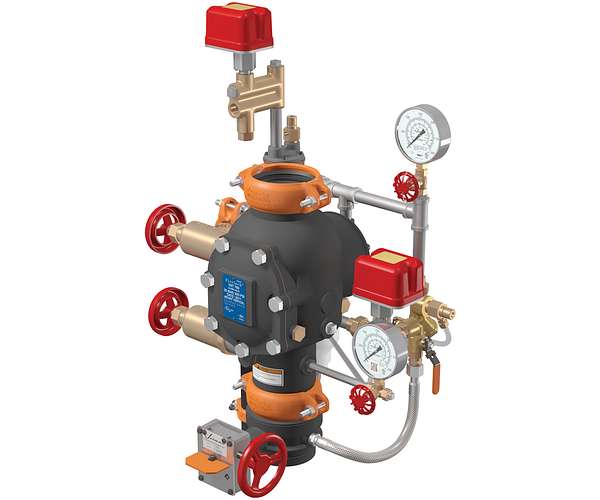
Instead of getting water flow from any individual heads which are to be operated, once water fills the system, water will flow simultaneously from each and every sprinkler head. Quite similar to a pre-action system, a deluge valve is found responsible for keeping the water from filling the system until the operation of any another type of detection system like the smoke detection. As soon as the detection system is found to be activated, water will definitely not only fill the system but will also flow from the open sprinklers or nozzles.
Advantages of Sprinkler Systems
There is one more consideration in the selection of the type of sprinkler system which needs to be known according to the level of hazard that needs to be protected. These systems are found having advantages wherein if protecting an area of high hazard is required like aircraft hangers, this system is definitely found to be the most suitable one.
Every system discussed by now is found having its own advantages. This is why it is important to consider the pros as well as the cons of each system type at the time of selection in order to select the most appropriate sprinkler system that best suits your requirements. An entire building can found to be protected by the help of the combination of such systems. It is suggested to combine different types of systems which helps in building the protection and also allows the designer to consider each unique environment in order to apply the most appropriate system type without sacrificing the best for any other areas of the building.
Pre-action sprinkler systems are specifically known for usage at such locations which are found to be accidental activation. This can be the museums, special technology companies, data centres along with various other computers etc.
There are various other advantages of sprinkler system types which is dependent upon the type of system which you wish to select. Other than this, particularly every system is found having different uses which depends upon the site requirement as well as the financial stability.
Non Fire Event
Considering the non-fire event the accidental damage to any sprinkler head results in the glass bulb breaking, the system is found filling the pipe with water in a non-interlock system wherein the water seems to flow from the broken sprinkler head.
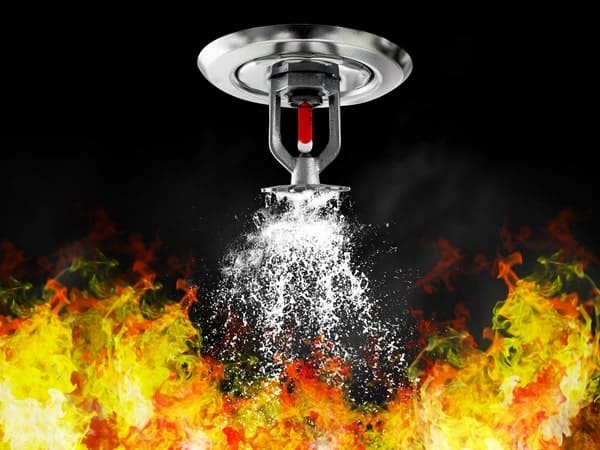
The non-interlock as well as the single interlock systems are also found being operated in a very similarly way as there is in any fire event. The heat detectors are responsible for activating first as they have a lower temperature rating. Both interlock as well as single interlock system are critically the activation of the heat detectors which is required that would definitely result in the system for getting it filed with water. Then in case if the temperature is found increasing continuously then a sprinkler is also found being operated.
By now, if the heat detection has been done, then the system is found to be filled with water which would expect it to act like a traditional wet pipe system. Observing the double-interlock system it can be found that the one which is filled with the water upon being activated of the heat detection. It is important to know that the complete system is filled with the water as after activation of the heat detection system along with the operation of a sprinkler head. So, a delay in water delivery similar can be expected to what is being seen for any dry pipe system which can occur. The double interlock pre-action system is found to be similar with respect to the size restrictions as dry pipe systems, whereas the non-interlock as well as the single interlock are just found to be limited to 1000 sprinkler heads per pre-action valve.
Considerations To Make To Avoid Any Damage
There are some considerations which need to be kept in mind in order to avoid any damage which may lead to the selection of any other type of permitted sprinkler system. In many cases, there can be a desire in order to minimize the risk factor of water damage or to prevent any accidental filling of the system. In such cases, either a single or double interlock system must be preferred as an option.
This is what could definitely eliminate the risk of accidental water flow if any of the sprinkler head is fund being damaged. It does not specifically prohibit the use of double interlock systems, particularly in such types of spaces whereas the double interlock pre-action system is found not to be developed for such types of situation. The main intension for use in the freezer storage warehouses is found to be quite similar to the other situations whereas the accidental presence of water in any piping system is found leading to an expensive remediation. It is really very important to consider the delay in terms of water delivery that needs to be occurred accompanied with a double interlock pre-action system which is selected as that system type.
Image Source :- ecstechnicalservices
